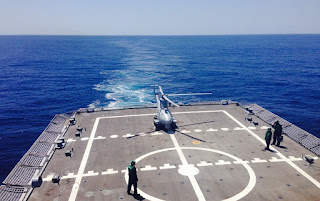What is an autonomous system? Are we talking about the same things?
by Curtis Blais, NPS Faculty Associate Research, clblais(at)nps.edu I enjoy reading the monthly articles in the CRUSER Newsletter . We are challenged intellectually by new ideas and even by the different terms used in talking about robotic systems. For example, in the January 2015 issue, Paul Scharre (“The Coming Swarm”) spoke of human-inhabited and uninhabited systems, with the statement that incorporation of increasing automation in uninhabited systems helps them become “true robotic systems.” Such concepts make one wonder how to classify the emerging “driverless” automobiles that transport humans and allow human override, or autonomous medical evacuation aircraft transporting human casualties – are those “true robotic systems”? Clearly, a challenge in new fields of research and technology is reaching common agreement and use of terminology. In the Department of Defense, the robotics field has emerged rapidly as a revolution in warfighting, potentially reshaping the ...
